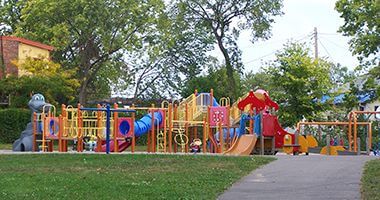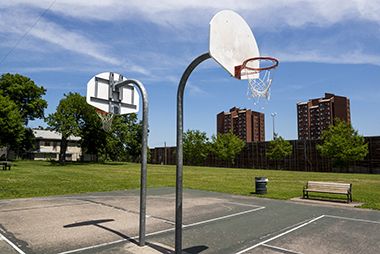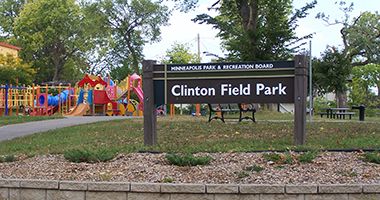Address
2433 Clinton Ave.
Minneapolis, MN 55404
Plan Your Route
Contact
Phone: 612-230-6400
Email: info@minneapolisparks.org
Park Hours
6 am–midnight
Ordinance PB-2-33
Features & Amenities
- Basketball Court
- Drinking Fountain
- Playground/Tot Lot
- Volleyball Court – Sand
Not finding what you’re looking for?
Search Parks & Destinations
Good to Know
Basketball Courts are half-courts.
Park Projects
See what’s currently in the works for this park. Some projects may be under the name of the regional park or service area it lives within. View Current Projects

Your NPP20 money at work:
Maintenance is increasing at all neighborhood parks, thanks to additional annual funding from the 20-Year Neighborhood Park Plan (NPP20). This initiative also funds ongoing rehabilitation and major project to restore neighborhood parks and help address racial and economic equity.
Park Details
Rentals & Permits
Outdoor Use and Event Space: Learn how to reserve park space for corporate events, community celebrations, and more.
History
Name: The park was named for its location on Clinton Avenue on April 6, 1927, but could just as well have been named for Clinton Morrison who set in motion the events that led to the acquisition of this small park. Clinton was the son of Dorilus Morrison one of the first park commissioners in 1883. Clinton Morrison donated the house and estate of his father to the park board in 1911 specifically for use as a site for a new art museum. That land, Dorilus Morrison Park, two blocks west of Clinton Field, is now the site of the Minneapolis Institute of Arts.
Acquisition and Development
Clinton Field is a park today because the park board agreed to demolish the grandest building it ever owned. When Clinton Morrison donated the home and estate of his father, Dorilus Morrison, to the park board in 1911 for the express purpose of becoming the site of an art museum, Dorilus Morrison’s old friend William Washburn, whose estate was across the street from Morrison’s, made his own donation to the park board. William Washburn and his wife sold to the park board the eight acres on which their home stood, but they threw in at no cost all the buildings on the property—a considerable donation given that their home, Fair Oaks, the grandest home in the city, was worth an estimated $400,000. Following the death of Mrs. Washburn in 1915, when the park board took possession of the property, named Washburn Fair Oaks Park, it soon demolished the barns and greenhouses on the estate. But Fair Oaks, the mansion, remained standing for several years although it was never maintained by the park board and fell into disrepair.
While the building deteriorated, the grounds around it became used as a playground by neighborhood children. Neither a dilapidated mansion nor children’s ball games were appreciated by some in the neighborhood. The building deteriorated to the point that in 1923 Helen Law and others offered to give the park board $25,000 to buy a new playground in the neighborhood if it would demolish Fair Oaks. (Earlier in the year Law had asked the park board to ban baseball in the park and to build two tennis courts there instead.) The Minneapolis Society of Fine Arts, which operated the Institute of Arts, favored the demolition so that a suitable setting and approach to the Institute could be created.
The park board accepted the offer and began to consider sites for a new playground in the neighborhood. The old mansion was demolished in 1924, but the purchase of the new playground, Clinton Field, was not completed until 1926. Washburn Fair Oaks continued to be used as a playground in the interim.
The site chosen for the new playground was not the first considered. The park board’s first option was the block between 27th and 28th Streets and Third Avenue and Stevens Avenue. When that didn’t materialize, the park board settled on the southern two-fifths of the block on Clinton Avenue. Theodore Wirth in his superintendent’s report for 1926 recognized that the small field “must be enlarged, in order to provide for the most necessary accommodations of a medium-sized field.” His report included a plan to extend the park to the west or the north to make it large enough to accommodate a playing field and a small shelter. Without that expansion, the neighborhood wouldn’t have to worry about ball games on the new park because it was too small. The park was never enlarged.
Clinton Field is the only remnant of the plan to create a landscaped plaza and approach to the Institute of Arts in 1923. In the same 1923 annual report in which Wirth and Phelps Wyman proposed the plaza for the Institute of Arts, Wirth recommended that a small park in northeast Minneapolis, Sheridan Field, either be enlarged or abandoned because its “inadequate size” did not “justify the expenditures for operation.” It was roughly the same size as the land eventually purchased for Clinton Field.
Clinton Field was provided with a skating rink and warming house in its first year as a park in 1926, but when neighbors petitioned for a “more commodious” warming house the next year, the petition was denied.
The next time the park board spent a dollar on the park was almost thirty years later. The park board included Clinton Field on a list of playgrounds that needed extensive improvements—$150,000 worth—in its post-WWII list of the city’s playground needs, but few park board requests for bond funding were approved by the city council in the late 1940s and early 1950s.
Finally in 1955 the western edge of the park was regraded for a playing field and an area was paved for a basketball and volleyball court. Playground equipment, a drinking fountain and picnic tables were also installed at a cost of less than $20,000.
A new master plan created in 2000 for Clinton Field and Washburn Fair Oaks—appropriate given their linked histories—provided for a complete makeover of the park, including new playground equipment and hard-surface courts.
Park history compiled and written by David C. Smith.










